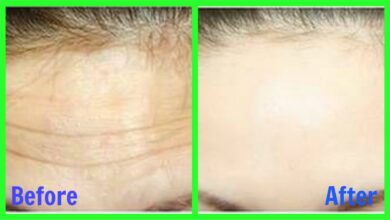If you’re into your 40s or beyond, your skin no longer produces oils the way it did when you were younger. These oils act as a barrier, protecting skin from chemicals in the environment that cause irritation and inflammation.
Adding emollients and hydroxy acid cleansers to your skin care routine not only helps keep your skin from becoming crepey, but it also helps prevent further damage if your skin is already lax.
Dr. Kassouf recommends retinol topical creams to help reduce that crepey look. Retinols help restore skin’s elasticity and thicken collagen (which gives our skin its structure) as well as elastin (which gives our skin its stretch).
What about plastic surgery or other options?
Moisturizers and other creams work well for mildly crepey skin, but they have limitations. For instance, if you’ve lost a large amount of weight, leaving you with a lot of crepey skin, a plastic surgeon likely will need to remove it.
Before deciding on surgery, you may want to consider procedures like Thermage, which uses radio frequency waves to heat skin, build collagen and tighten up in a limited area. This procedure is sometimes painful and costly, and there are slight risks, Dr. Kassouf says. It has variable success rates and isn’t meant for everyone, she says.
The best candidate for this kind of procedure is someone who:
- Has a small area (like the neck or love handles) to tighten.
- Has lost 10 to 20 pounds and has a small amount of skin that needs tightening.
- Has had a baby and is struggling to get the stomach firm again.
- Is in his or her 40s or 50s and has mild, age-related skin laxity.
There are a host of options available — from lotions to surgery — that can help reduce crepey skin as you age. Some products are available over the counter and some need a prescription.
Work with your doctor or dermatologist to decide what the best options are for your lifestyle and skin care needs.




